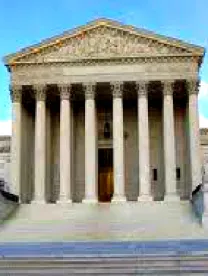3M Company’s challenge to the validity of Treas. Reg. § 1.482-1(h)(2), if successful, could result in refunds for taxpayers that previously followed the Internal Revenue Service’s regulatory guidance purporting to overrule judicial precedent if they timely file protective refund claims.
In March 2013, 3M filed a petition with the U.S. Tax Court challenging the Internal Revenue Service’s (IRS) determination that $23.6 million in additional royalty income should be allocated to 3M’s U.S. headquarters from its Brazilian subsidiary. See 3M Co. v. Commissioner, T.C. Dkt. No. 5186-13. Specifically, the IRS determined that Brazilian legal restrictions on the payment of royalties to the U.S. parent should not be taken into account in determining the arm’s-length price between 3M and the subsidiary under Treas. Reg. § 1.482-1(h)(2). 3M’s position will require the Tax Court to revisit its earlier, pre-regulations holdings on the subject and to decide whether the Supreme Court of the United States has already resolved the issue. (For prior coverage of this issue, see McDermott’s April 18 publication “Taxpayer Challenges Validity of IRS Transfer Pricing Regulation.”)
Section 482 provides the IRS with broad authority to allocate income among commonly controlled corporations to prevent the artificial shifting of net incomes of controlled taxpayers and to place them on a parity with uncontrolled, unrelated taxpayers. More than 40 years ago, the Supreme Court in Commissioner v. First Sec. Bank of Utah, 405 U.S. 394 (1972), rejected the IRS’s attempt to apply section 482 where federal law prohibited the taxpayer from receiving the income the IRS was seeking to allocate to it. Relying on longstanding and basic principles of taxation, the Supreme Court noted that “[w]e know of no decision of this Court wherein a person has been found to have taxable income that he did not receive and that he was prohibited from receiving.” The Supreme Court invoked the “complete dominion” doctrine, first enunciated in 1955 in the seminal case of Commissioner v. Glenshaw Glass Co., 348 U.S. 426 (1955), wherein it defined income to include all “accessions to wealth, clearly realized, and over which the taxpayers have complete dominion.” In other words, the Supreme Court held that the taxpayer could not have “income” due to the legal restrictions, and, therefore, the IRS could not use section 482 as a tool to reallocate the restricted amounts to the taxpayer.
The Supreme Court also noted that the IRS’s own regulation—Treas. Reg. § 1.482-1(b)(1) (1971)—was consistent with the complete dominion and control concept because it assumed that a group of controlled taxpayers have “complete power” to shift income. The Supreme Court noted that its holding comported with the statement in the regulations that the “purpose of section 482 is to place a controlled taxpayer on a tax parity with an uncontrolled taxpayer.” As discussed below, the importance (or lack thereof) of these statements is crucial to the IRS’s current litigating position regarding the regulation at issue in 3M.
Dissatisfied with the Supreme Court’s holding in First Sec. Bank, over the next two decades the IRS attempted to limit the scope of the opinion to federal law restrictions through published guidance and litigation of cases where the restrictions arose from the operation of foreign or state law. Courts universally rejected these attempts, finding nothing in First Sec. Bank that limited its holding to federal restrictions. See, e.g., Salyersville Nat’l Bank v. U.S., 613 F.3d 650 (6th Cir. 1980) (state law); Procter & Gamble v. Commissioner, 961 F.2d 1255 (6th Cir. 1992), aff’g 95 T.C. 323 (1990) (foreign law); Tower Loan of Miss., Inc. v. Commissioner, T.C. Memo. 1996-152 (state law); Texaco, Inc. v. Commissioner, 98 F.3d 825 (5th Cir. 1996), aff’g Exxon Corp. v. Commissioner, T.C. Memo. 1993-616 (foreign law);Bank of Winnfield & Trust Co. v. U.S., 540 F. Supp. 219 (W.D. La. 1982) (state law). It is worth noting that, in U.S. v. Bayse, 410 U.S. 441, 453 n.13 (1973), decided shortly after First Sec. Bank, the Supreme Court phrased its holding as involving situations where the taxpayer “could not have received that income as a matter of law” without any distinction between federal, state or foreign law.
Ultimately, the IRS accepted the application of First Sec. Bank to domestic law (e.g., federal, state or local). Rev. Rul. 82-45, 1982-1 C.B. 89; GCM 38545 (Oct. 17, 1980). However, it refused to accept its application to foreign law restrictions and issued regulations intended to both overrule Procter & Gamble and Texaco/Exxon and to limit First Sec. Bank to domestic law.
In 1994, the IRS promulgated current Treas. Reg. § 1.482-1(h)(2), which provides, in part, that “a foreign legal restriction will be taken into account only to the extent that it is shown that the restriction affected an uncontrolled taxpayer under comparable circumstances for a comparable period of time.” Although the regulation also contains a deferred income election that permits the deferred recognition of restricted income, subject to a matching deferral of deductions, it may be difficult in most situations to meet these requirements. In promulgating the new regulation, the IRS has relied on the fact that the “complete power” regulation cited by the Supreme Court in First Sec. Bank had been repealed. Additionally, it appears that the IRS interpreted the Supreme Court’s statement that its holding was consistent with the “parity treatment” provided in the section 482 regulations as meaning that First Sec. Bank can properly be applied only where the end result of its application is consistent with the arm’s length standard underlying section 482. Finally, the IRS’s position relies on an expansive view of the scope of its continuing power to issue regulations clarifying and defining the law in light of the existing judicial landscape.
Somewhat surprisingly, no taxpayer has challenged the validity of Treas. Reg. § 1.482-1(h)(2) in a judicial proceeding in the 20 years since its promulgation. In order to succeed, 3M must demonstrate that the regulation fails to pass the two-step test set forth in the Supreme Court’s 1984 opinion in Chevron, U.S.A. Inc. v. NRDC, 467 U.S. 837 (1984). Under Chevron Step One, a court looks at whether Congress has directly spoken to the precise question at issue. If not, the analysis proceeds to Step Two and whether the agency action is based on a permissible or reasonable construction of the statute.
In addition, as reflected in recent tax and nontax opinions, agency action that violates the Administrative Procedure Act (APA) may render such action procedurally invalid. APA challenges to regulations are becoming increasingly common in today’s tax environment, as highlighted by pending challenges to Treas. Reg. § 1.482-7(d) in Altera Corp. v. Commissioner, T.C. Dkt. Nos. 6253-12 and 9963-12, and Amazon.com, Inc. v. Commissioner, T.C. Dkt. No. 31197-12, the recent appellate decisions in Dominion Resources, Inc. v. United States, 681 F.3d 1313 (Fed. Cir. 2012), and Cohen v. United States, 650 F.3d 717 (D.C. Cir. 2011), and the briefing and argument in the cases that culminated in the Home Concrete decision (discussed below).
The Supreme Court’s approach in First Sec. Bank of focusing on whether the taxpayer could have “income” instead of jumping straight to section 482, and the subsequent application to foreign law restrictions in Procter & Gamble and Exxon/Texaco, provide strong support for 3M’s position. Whether 3M succeeds may also depend on how the Tax Court applies the recent Supreme Court decision in U.S. v. Home Concrete & Supply LLC, 132 S.Ct. 1836 (2012). There, the Supreme Court held that its prior interpretation of a statute meant that “there is no longer any different construction that is consistent with [the prior opinion] and available for adoption by the agency.” In comments reported in the tax press following the Supreme Court’s decision, high-ranking government officials at both the IRS and the Department of Justice’s Tax Division indicated that pre-Chevron decisions should be generally read as final determinations not subject to change by regulations.
Taxpayers that have followed the regulation should consider filing protective refund claims in the event the regulation is ultimately invalidated. In general, the statute of limitations for tax refund claims is three years from the filing of the relevant return (two years from the date of payment, if later). If the IRS issues a notice of claim disallowance, the taxpayer must either bring suit to contest the disallowance within two years after the issuance of this notice or obtain an extension of time to file such a suit with the IRS. The latter process can be initiated by filing IRS Form 907, Agreement to Extend the Time to Bring Suit. (For more information on how to file protective refund claims, see our September 18 newsletter, “Second Circuit Reaffirms Taxpayer’s Use of Protective Refund Claims.”) For future filings, taxpayers should consider whether to file Form 8275-R, Regulation Disclosure Statement, to further protect against penalties for positions contrary to regulations.





 />i
/>i

